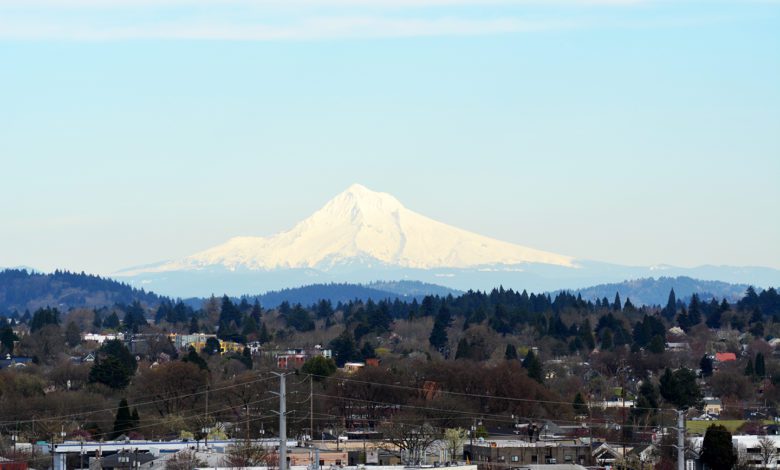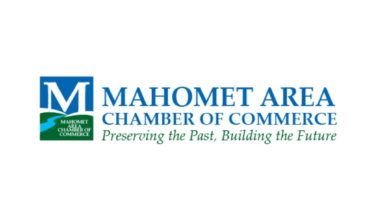Commentary: Driving across America during COVID-19 crisis

We made our last stop at Hurts Donuts in Bettendorf, Iowa, Friday morning after driving across the country for four days.
Like the rest of the country, my 19-year-old daughter, who was living her dream in Oregon, got her hours drastically slashed when the Governor, Kate Brown, announced that restaurants and bars would be closed for dine-in beginning on March 17.
I began to feel the pang in my gut early Sunday morning, the one calling me to bring her home, not because I was scared of her getting COVID-19 but because I was scared that she would be alone, without work and unable to pay the rent she owed where three people over the age of 60 lived; I feared for them if she had COVID-19. And in the same breath, I hated the thought of bringing her home because after 18 years of not feeling like she belonged to anyone other than the five people who lived in this house, my girl had found her independent stride; after years of talking to a heart that ached, I constantly got to talk to one filled with wonder and joy.
By Sunday afternoon, I had purchased a ticket for Monday morning that took me from the Central Illinois Airport, in Bloomington, to Atlanta and on to Portland. The airport was eerily quiet. I was pretty early for the flight because I was scared there would be a line; instead, I was the lone passenger in the airport until about 30 minutes before the flight that had about a dozen people on it.
When I took off, Brown said that she would not close restaurants and bars, and an hour after I landed in Atlanta, she had changed her mind.
Atlanta seemed to be busier, but as I ate lunch, the waiter told everyone who came in that several wings had already been closed, and “D”, where we were, might be closed too, leaving only “A” open.
My daughter had already packed most of her belongings, so by Tuesday morning, we finished packing up her car, she went to work where I sat for five hours while she served one customer: the owner of the building.
We left Portland by 3 o’clock. I was kind of excited that for the first time in my life, I would be in some of the darkest areas of the world and may be able to see the stars from a different viewpoint after 7 p.m. But, it turned out to be cloudy. And rainy. And pitch black as we weaved through western Oregon, where I could only see the outlines of the mountains from the lights from the cars that were on the road with us.
I was surprised by the amount of traffic in this region, at this time of night, but we were never alone.
Being in the middle of nowhere while you are moving your daughter home while also trying to make sure that your readers have the information they need at home was a challenge. I would write what I could when it wasn’t my turn to drive, and we would pull over at gas stations when I didn’t have a signal to post.
But the scenery on the drive was incredible. The enormity of this world is breathtaking; seeing how small you are compared to the Columbia River Gorge or the Wasatch Range, looking along the horizon in the open range of western Wyoming or driving through the fields painted gold in Nebraska, all I could think about is that there is still a world, and it is still functioning, even though we as humans feel like the whole thing has stopped.
The cows and horses are still grazing. The rivers are still running wild. The snow is still melting. The buds on the trees are still blooming. The wind is still blowing. And as of Thursday night, the snow in Wyoming was still falling.
We are lucky that we caught that one. We planned on spending Thursday night in Cheyenne, Wyo., after driving for 13 hours. When I turned on NPR radio, I learned that a blizzard would start a little after midnight with 6 to 8 inches of snow, 50 mph winds and whiteout conditions. The last thing we needed was to be stuck in Wyoming.
We were lucky enough to have someone at home who was willing to help us find a new place to stay a few hours past Cheyenne. If we got up early enough, we could drive ahead of the snow and through the rain on the second-to-last day.
Our final stop was a familiar one in the Quad Cities where my best friend greeted us with my favorite ice cream in the world, Peanut Butter Pretzel Bark from Whitey’s. We had Lopiez at 9 p.m. for dinner. I told the owner, “Thank you for helping us.” And he looked up and said, “Thank you for helping us.”
The next morning we ended up at Hurts Donuts to get a dozen freshly made, candy sprinkled donuts to take home.
Hurts was like every other stop we made across the United States, nearly vacant, offering curbside or carry out, only allowing about five people in the building at a time. In a location that generally has a line, even at 10 p.m. on a weekday, I was able to walk right in, order the donuts and leave.
The girl serving me wore plastic gloves, much like those who had served me at restaurants and gas stations. I told her that after having stopped around every 200 miles, it was interesting to see the different ways people were handling payments.
Before we left Portland, we stopped at Salt and Straw, my daughter’s second favorite ice cream shop (the first is Coneflower in Omaha, which we also visited). They were only serving take-and-go pints: we picked a berry pie flavor, which was amazing, and ate it in the car. The woman at the front greeted everyone with “Hello, friend” because she had to lay down the hard truth that groups that had more than two would have to wait outside. When I went to pay with cash, she wouldn’t touch it, and instead asked me to pay with my card. She wouldn’t touch the screen, I had to. I left her a nice tip, signed my name, and then she wiped down the screen.
I took the cash that I would have used for my ice cream to give to a man that I assumed was homeless outside of Salt and Straw. Instead, he told me that his radio station raised money so that homeless musicians would have opportunities to make music.
When we stopped for pizza in the Columbia River Gorge, we watched a lady who was emotionally distraught yell and scream and cry outside of her car for at least 15 minutes. She ended up storming off. When I went inside to pay for our food, there were six people in the kitchen working on orders, one manning the window and another woman with a high sweet voice who took care of me. Inside the restaurant, all of the seats were sitting on top of the tables and there were signs all around saying that people could not dine in. She was not wearing protective gloves and took my card, and offered me a drink.
At one point we could not take another bite of something that didn’t have meat or vegetables, so we stopped at a Greek restaurant where a lone woman sat in her empty space just waiting for a customer to come. My daughter, a vegetarian, order a falafel sandwich and I got two chicken pieces on a stick with rice and fresh vegetables. I loved knowing that she was preparing something fresh just for us. When I asked if there was a park that we could eat in nearby, she offered a space for us to eat.
It was often hard to find a place to stop because some gas stations closed down. In Nebraska, some rest areas were closed to curb the theft of toilet paper. And I will admit that we talked about taking toilet paper from our hotels; but we did not because even though we are panicked, we have enough. We have enough at this moment.
None of us know how long this is going to last or what the ripple effects of this will be. But what I do know after driving across the country this week is that even though we are taking precautions, we are still a kind people. I know that the heart of this world is still beating even though mine is breaking. I know that above these grey skies in East Central Illinois, there is a sun still shining; I saw it from the plane’s window.



